Caring for a beard involves more than just letting it grow; it’s about maintaining its health, appearance, and overall appeal. At CARS.EDU.VN, we understand the importance of a well-groomed beard and offer expert advice to help you achieve the perfect look. From beard grooming essentials to styling techniques, discover how to nurture your facial hair. Explore beard maintenance tips, beard care routines, and beard grooming habits at CARS.EDU.VN today.
1. Getting Started With Beard Care
The foundation of a great beard is laid long before you start styling it. It begins with the decision to grow one and understanding the initial steps involved.
1.1 When Should You Start Grooming Your Beard?
Grooming should commence as soon as you decide to grow a beard. Although you might resist the urge to trim, style, or shave your face entirely for the first 4-6 weeks to allow even growth, you can start a beard care routine and use beard care products immediately. This early start is crucial for setting the stage for a healthy and well-maintained beard.
1.2 Why Are Grooming Habits Important?
Healthy grooming habits are essential for maintaining the health of your skin and facial hair. A great beard doesn’t just happen; it requires time, patience, and a proper care routine.
The benefits of caring for your beard include:
- Enhanced Appearance: A well-groomed beard simply looks better.
- Prevention of Skin Issues: Prevents dry, itchy skin and the accumulation of unwanted oils.
- Hair Training: Consistent grooming helps train your hairs to lie the way you want them to, making overall grooming easier.
1.3 Essential Beard Grooming Products and Tools
Having the right products and tools is the first step toward caring for your beard. Here’s a list of essential beard grooming products suitable for beginners to experienced beard growers:
| Product | Description |
|---|---|
| Beard Wash | Cleanses the beard without stripping natural oils. |
| Beard Oil | Moisturizes the beard and skin, reducing itchiness and promoting healthy growth. |
| Beard Balm | Provides hold and control for styling, while also moisturizing and conditioning the beard. |
| Beard Comb/Brush | Detangles and styles the beard, distributing oils evenly. |
| Beard Trimmer/Scissors | For shaping and maintaining the beard’s length and outline. |
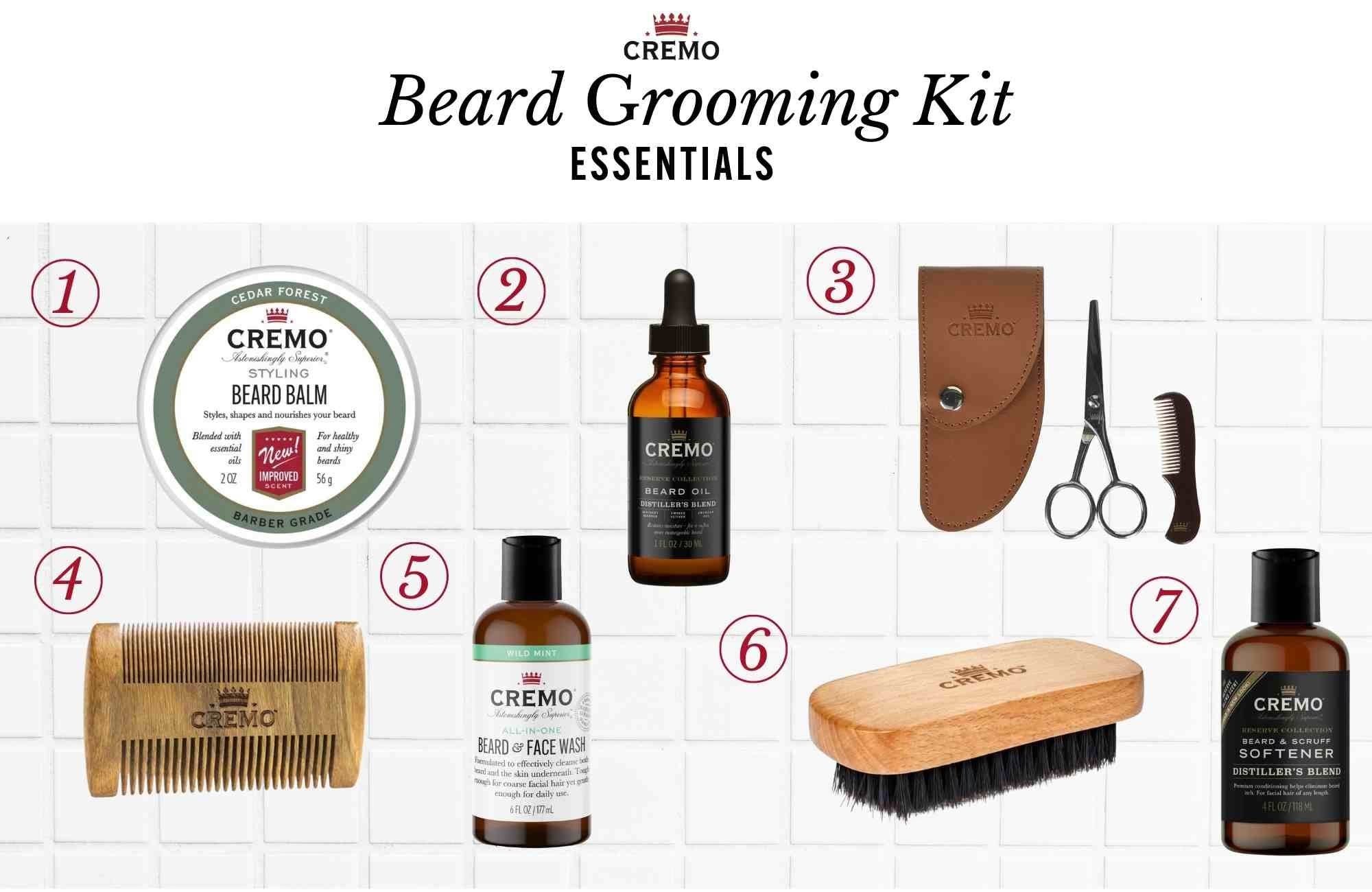
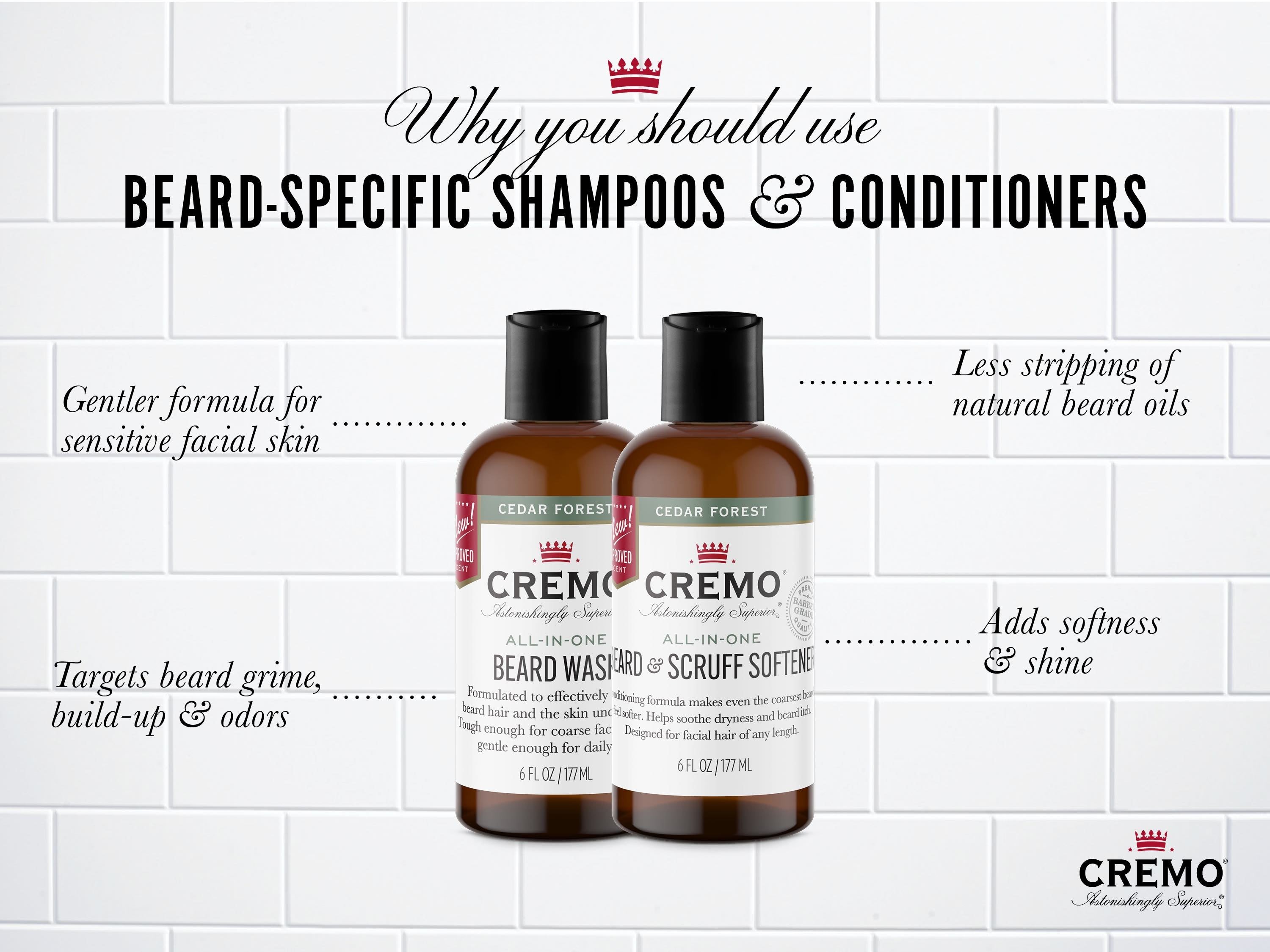
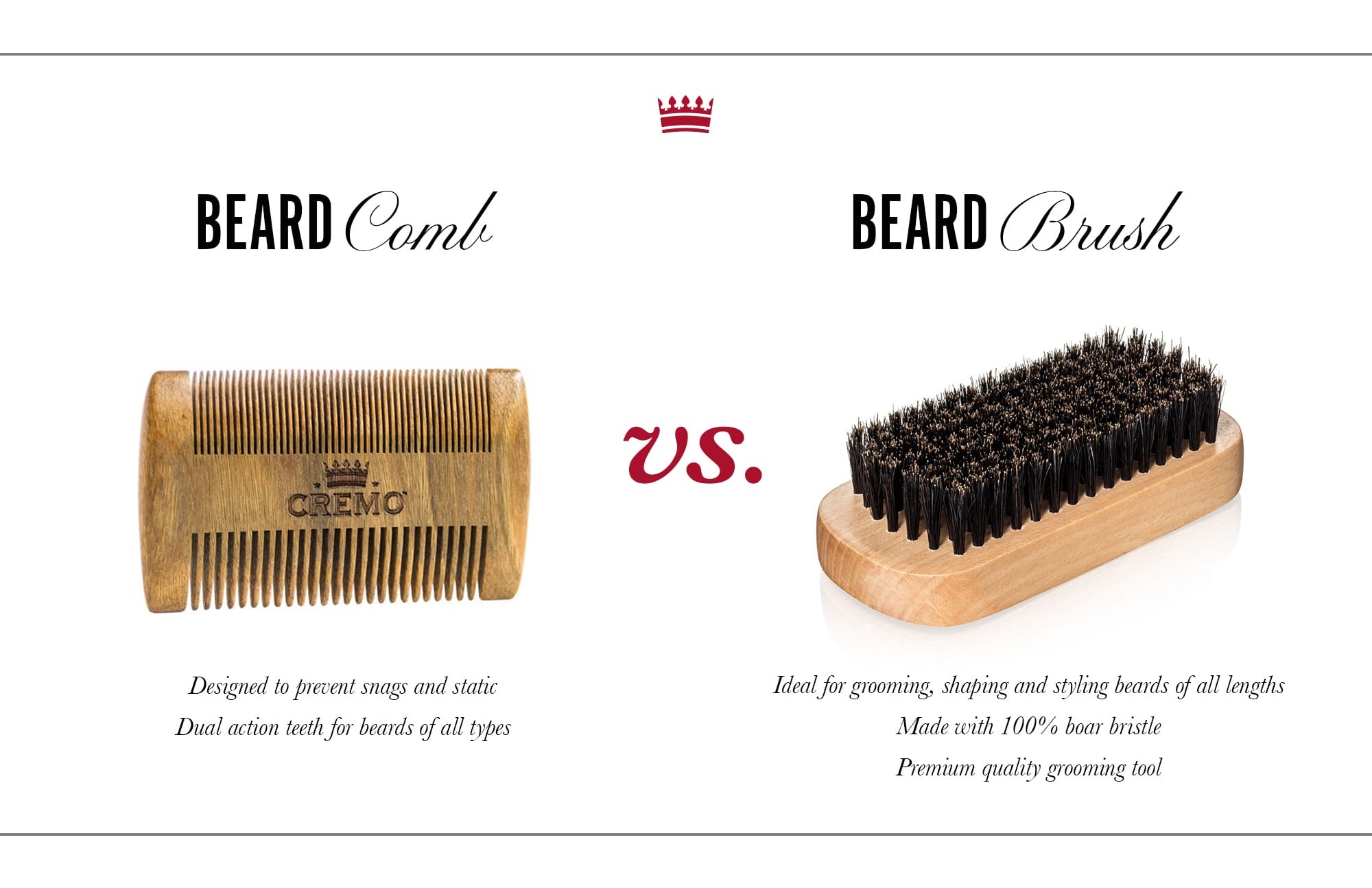
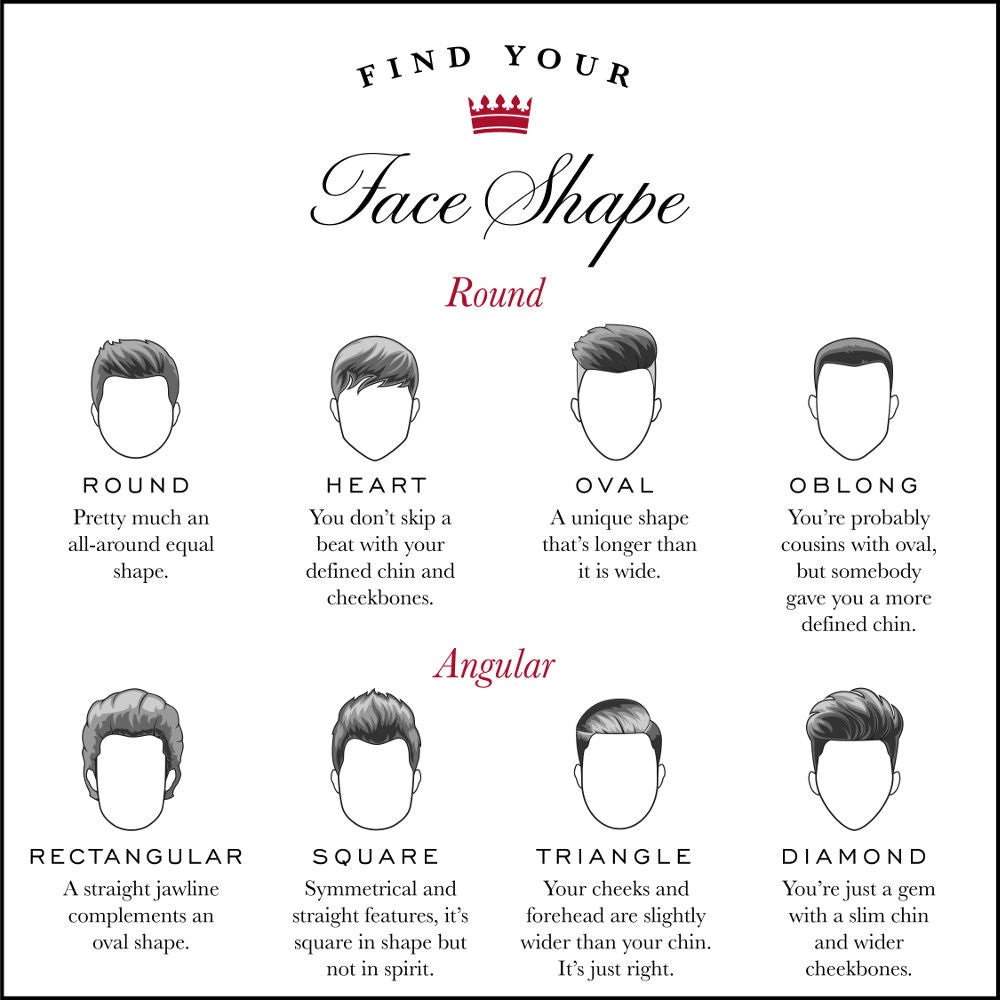

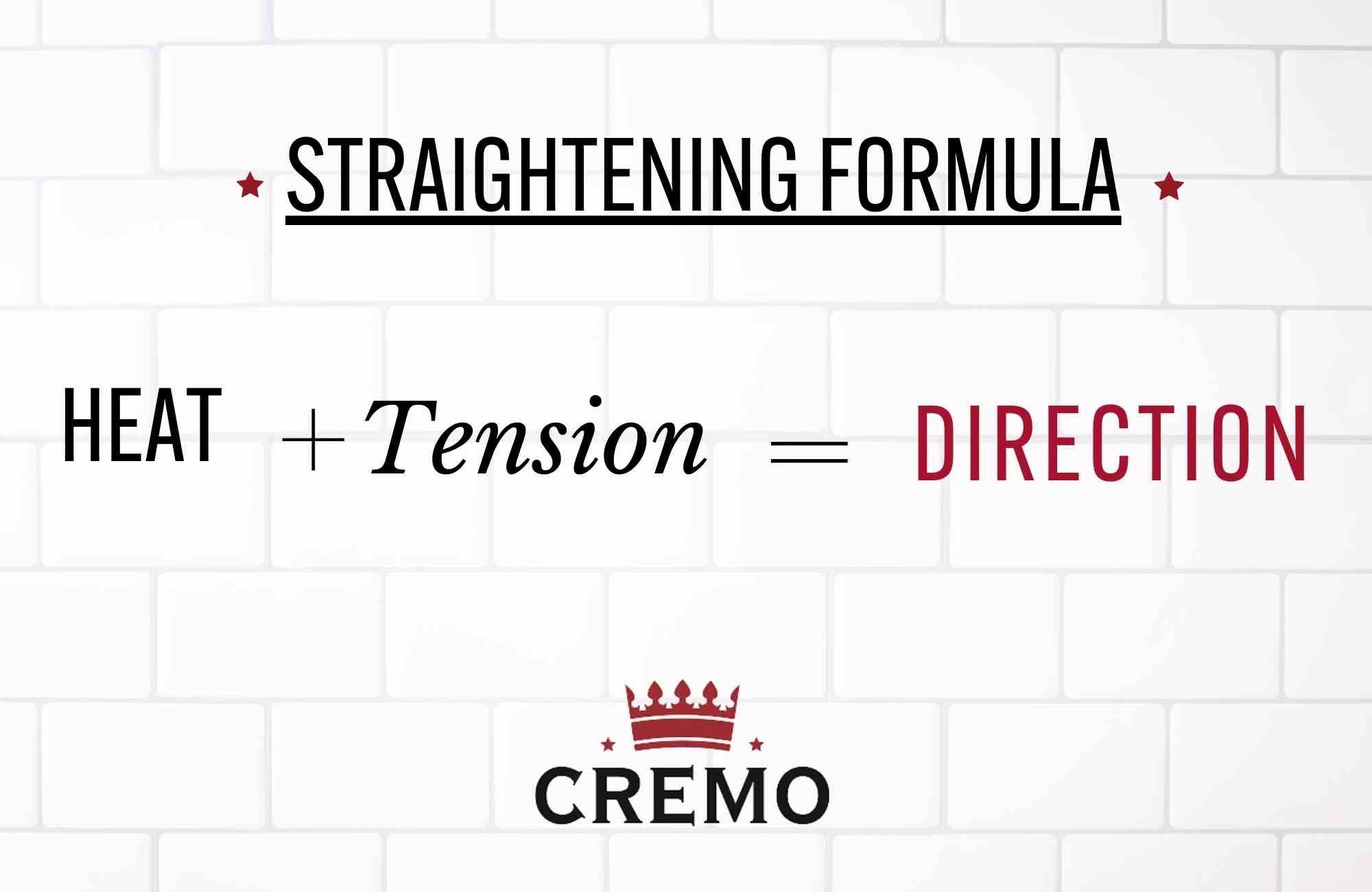
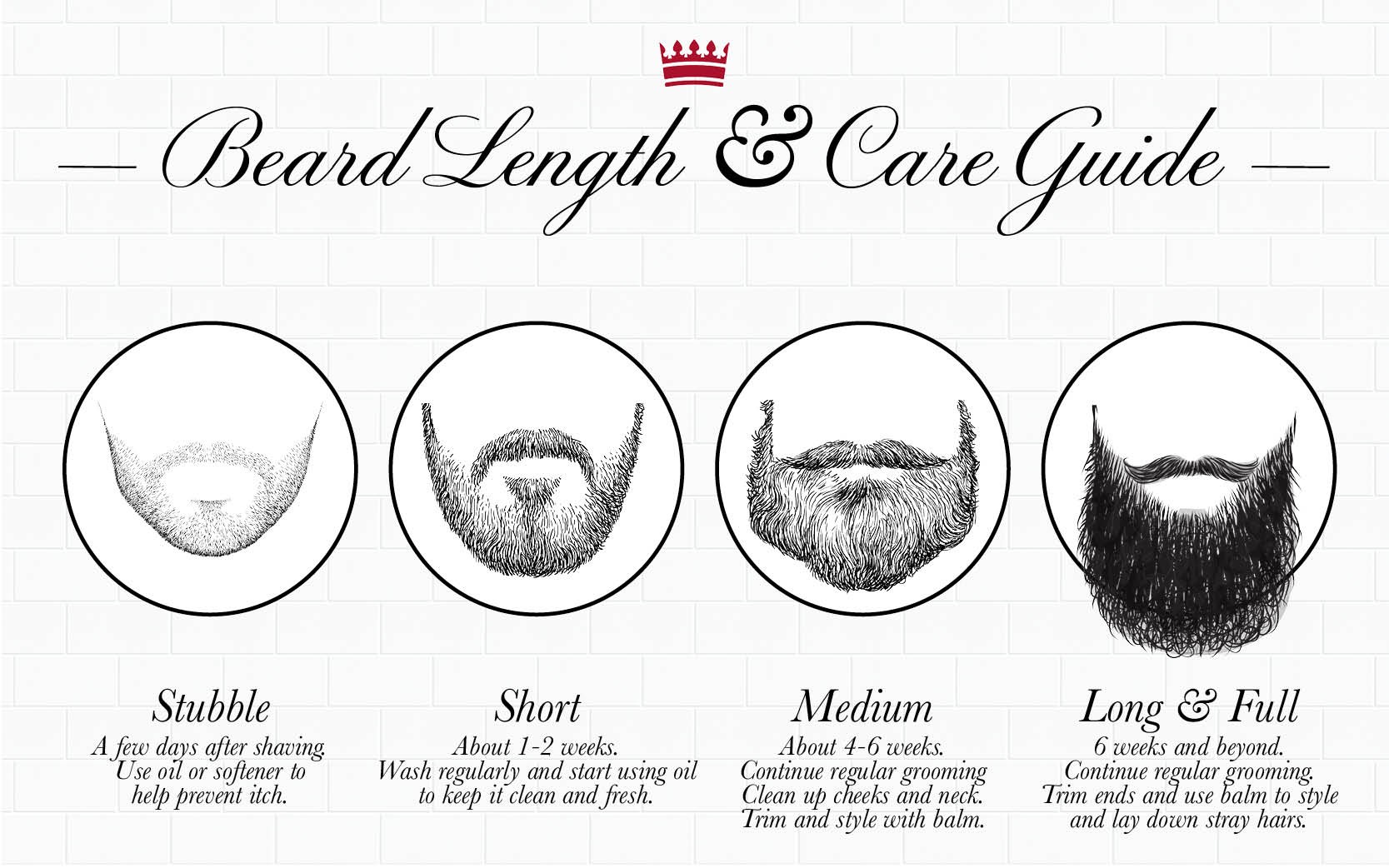



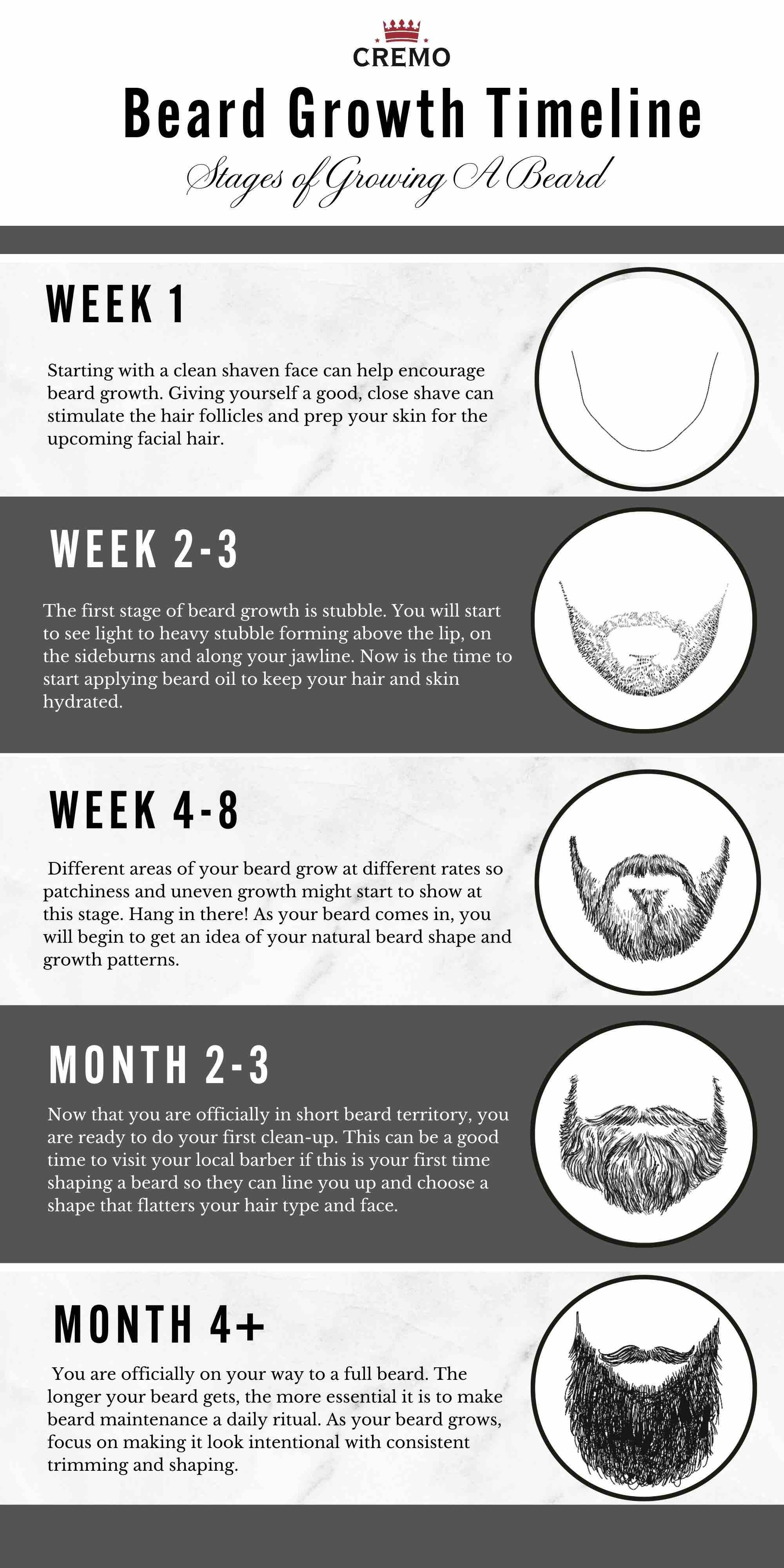
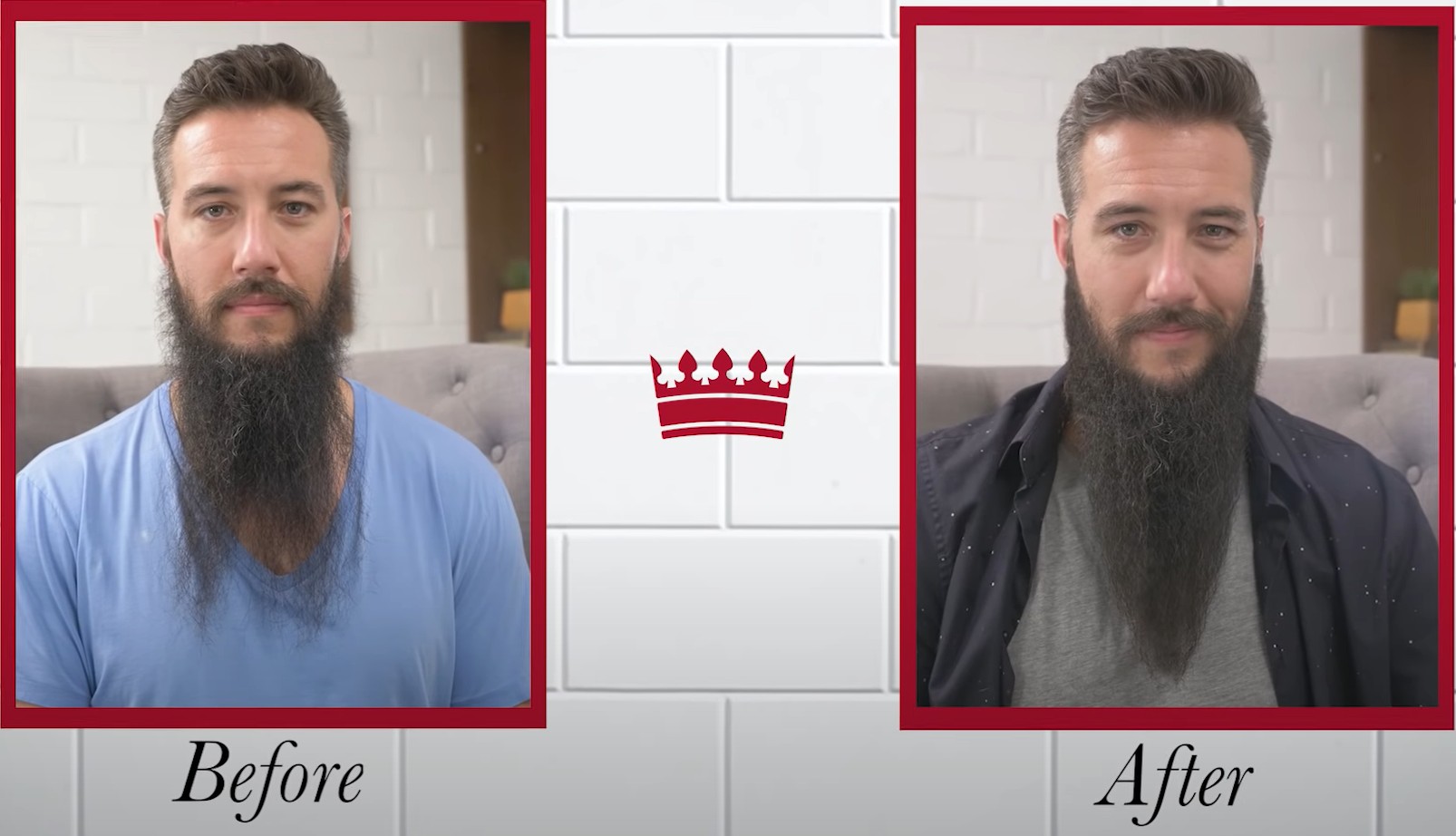
Now, let’s delve into how to integrate these essentials into your beard care routine effectively.
2. Grooming: Establishing Your Beard Care Routine
Creating a consistent beard care routine is crucial for maintaining a healthy and stylish beard. This involves daily and weekly habits that cater to your beard’s specific needs.
2.1 Creating a Daily Beard Care Routine
A daily beard care routine should be simple but effective.
2.1.1 Daily Morning Routine
- Rinse: Start by rinsing your beard with warm water to remove any overnight buildup.
- Apply Beard Oil: While the beard is still damp, apply a few drops of beard oil to moisturize and soften the hair.
- Brush/Comb: Use a beard brush or comb to detangle and style the beard, ensuring the oil is evenly distributed.
2.1.2 Every Few Days or Weekly
- Wash: Wash your beard 2-3 times a week with a beard-specific wash to avoid stripping natural oils.
- Softener: Use a beard softener at least once a week to add moisture back into the skin.
- Trim: Trim any stray hairs or maintain the beard’s shape as needed.
These steps are foundational and can be adjusted based on individual beard characteristics. Experiment with different products and routines to discover what works best for your beard.
2.2 Healthy Beard Grooming Habits
Beyond the routine, adopting healthy habits will significantly enhance your beard’s condition.
2.2.1 Keep Your Beard Clean
Washing your beard 2-3 times a week is generally recommended, but this can vary based on skin type and activity level.
Using a beard-specific wash, like Cremo’s beard wash, is crucial because it lacks the harsh irritants found in regular shampoos that can strip away natural oils. According to a study published in the Journal of the American Academy of Dermatology, harsh shampoos can lead to dry skin and brittle hair, making a dedicated beard wash essential.
Follow up with a beard softener at least once a week to restore essential moisture.
2.2.2 Properly Dry Your Beard
The amount of time water stays on your beard can impact your hair follicles, making proper drying important.
2.2.2.1 Option 1 – Towel And Air Drying
Gently pat, don’t rub, your beard dry with a towel. Wet hair follicles are weaker, making them susceptible to damage from vigorous rubbing.
2.2.2.2 Option 2 – Blow Drying
For thicker, curlier beards, a blow dryer can be essential for maintaining control. Use a low heat setting to avoid damaging the hair and keep the dryer moving to prevent overheating.
2.2.3 Soften Your Beard
Prickliness, beardruff, and itchiness are signs of a beard in need of moisture. Consistent grooming and hydrating products can alleviate these issues.
2.2.4 Apply Beard Oil
Beard oil is a staple for maintaining a healthy beard. It moisturizes the beard and skin, softens the hair, and adds a healthy shine.
Apply it by rubbing a few drops between your hands and working it evenly through your beard, down to the skin.
2.2.4.1 When Should You Apply Beard Oil?
Apply beard oil right after a shower or washing your face/beard, when the follicles are open. This helps replenish the natural oils lost during washing.
2.2.4.2 How Much Beard Oil Should You Use?
- New Beard (first few weeks): 1 to 2 drops
- Mid Length (few weeks in): 3 to 4 drops
- Long Beard (established): Up to 7 drops
Start with a small amount and increase as needed to avoid an oily appearance.
2.2.5 Brush And Comb Your Beard
Brushing and combing properly can enhance the overall health of your beard. Brushing adds volume, softness, and shine, while also distributing natural oils and exfoliating the skin. Combs are ideal for detangling and styling longer beards.
2.2.5.1 Beard Brush vs. Beard Comb
- Brush: Best for shorter beards, “training” hair growth, and exfoliating the skin underneath.
- Comb: Ideal for longer beards, styling, and detangling.
Using both in your grooming kit can be highly beneficial once you have an established beard.
Regular shaping and trimming are also essential for maintaining the best look for your beard.
3. Shaping and Trimming Your Beard
Regular shaping and trimming are crucial for maintaining a well-groomed beard. This section provides a step-by-step guide to shaping, lining up, and trimming your beard effectively.
3.1 Shape Your Beard
Before making any cuts, planning your beard shape is essential. Choosing a shape that complements your face can significantly enhance your appearance.
Consult a face shape chart to determine the most suitable beard shape for you. The goal is to harmonize your beard and jawline to create an oval shape. For a comprehensive guide, refer to a complete shaping guide.
For your first shaping, consulting a local barber is a great option. They can provide personalized advice on the best shape for your face and beard goals. After the initial shaping, you can maintain the lines at home.
3.2 Line Up Your Beard
Lining up your beard involves defining the edges of your beard to create a clean and polished look. Use your beard comb as a visual guide and trim any stray hairs above or outside the desired lines on your cheeks, neck, and sideburns. Focus on symmetry, trimming a little at a time to ensure both sides are even.
Defining the neckline can be tricky. Too high, and you risk a double chin effect; too low, and you end up with a neckbeard.
Achieving symmetry is crucial when lining up your beard. A beard shaping tool can be a valuable asset in your grooming kit, helping you achieve a consistent cut every time. Remember, it’s always best to start conservatively, removing a little hair at a time.
3.3 Trim Your Beard
Regular trimming maintains your beard shape, stimulates healthy growth, and ensures a thicker, fuller appearance. Start by combing or brushing your beard to remove tangles and direct the hairs downward. If you’re satisfied with the length, use beard shears to snip any stragglers and trim the mustache. For larger sections, a beard trimmer is more efficient.
It’s recommended to trim your beard in the style you typically wear it. If you straighten your beard, trim it after straightening. If you prefer a natural look, trim after washing and drying your hair. Hairs tend to shrink as they dry, so trimming while wet can lead to uneven lengths.
Trimming with the grain of your hair makes your beard look fuller and helps hide any patchiness. Trimming against the grain can thin out your facial hair.
4. Styling Your Beard
Styling your beard is a personal choice, with options ranging from a natural look using minimal products to a refined shape achieved with heat.
4.1 Naturally Style With Product
Using beard balm or styling balm can help manage stubborn, stray hairs while moisturizing the beard. Apply the product and use a beard comb to smooth flyaways and direct the facial hair.
Hand shaping involves using your hands and fingers to flatten or shape challenging sections, creating visual symmetry and evening out irregularities. A final run-through with a beard brush can perfect the look.
Don’t forget the mustache. Use the smaller side of your beard comb to part your mustache in the middle and direct the hairs outward on either side. For a styled mustache, use a little balm or wax between your thumb and index finger to twirl the ends into the desired shape.
4.2 Straightening Your Beard
For coarse and curly beards, heated tools like a blow dryer or beard straightener can help refine the style. When using heat, remember the formula: Heat + Tension = Direction.
4.2.1 Option 1: Heated Brush
A heated brush applies heat directly to the strands via coils in the bristles. Using tension with the brush, you can direct the hairs to lay as desired. For straightening problem areas, brush the hairs out to the side using your face as a backboard to create tension, then brush them back down to lay flat.
4.2.2 Option 2: Blow Dryer and Comb
A blow dryer paired with a beard comb is versatile for adding volume and straightness. Hold the blow dryer at least 6 inches away from your beard and create tension with your beard comb, brushing the main body downward. Add volume by directing the hairs upward and then back down to polish the look.
5. Grooming Beards of Different Lengths
Beard grooming needs vary depending on the length of the beard. Different lengths require specific care routines and products to maintain their health and appearance.
5.1 Stubble to Short Beard Grooming
Stubble to short beards range from 1 mm to about 5.5 mm, typically covering the first 4-6 weeks of growth.
5.1.1 Best Products for Short Beards
- Beard Oil (1 to 2 drops)
- Beard Brush
- Beard Wash
5.1.2 Short Beard Care Tips
- Don’t wait to use beard products: Start using beard products from the beginning to minimize discomfort, itchiness, and dry skin. Beard oil penetrates the skin, keeping the beard moisturized and preventing common issues like itchiness and beardruff.
- Be patient: The first few weeks can be uncomfortable, but it gets better. Avoid trimming or styling for the first 4-6 weeks to allow full growth and a clear idea of what you’re working with.
5.2 Mid-Length Beard Grooming
Mid-length beards range from 7 mm to 14 mm, typically after 2-3 months of growth.
5.2.1 Best Products for Mid-Length Beards
- Beard Oil (2 to 4 drops)
- Beard Balm
- Beard Brush or Beard Comb
- Beard Wash and Beard Softener
5.2.2 Mid-Length Beard Care Tips
- Know your goal: After the first month, your beard will likely need shaping and trimming. Decide your goal before grabbing your shears or razor. If length is your goal, only touch up the lines on your neck, sideburns, and cheeks.
- Be consistent with your beard care: Consistency is key. Keeping your beard moisturized, clean, and styled will improve its health, appearance, and ease of maintenance.
5.3 Long Beard Grooming
Long beards are anything longer than 18 mm, typically after 4 to 6 months of growth or more.
5.3.1 Best Products for Long Beards
- Beard Oil (7 or more drops)
- Beard Balm
- Beard Comb AND Beard Brush
- Beard Wash and Beard Softener
5.3.2 Long Beard Care Tips
- Train your beard from the beginning: Direct the hair to grow as desired to make your beard journey easier.
- The longer the beard, the more moisture it needs: Beards, especially long ones, wick moisture, causing your skin to dry out faster. Use up to 7 drops of beard oil, depending on the length of your beard. Beard balm is also excellent for long beards, providing moisture all day long.
6. Troubleshooting Common Beard Issues
Addressing common beard issues is essential for maintaining a healthy and attractive beard. Here’s a guide to identifying and fixing these problems.
6.1 Common Beard Grooming Issues & How to Fix Them
| The Issue | The Signs | The Grooming Remedy | Recommended Products |
|---|---|---|---|
| Flyaways | Wild strands sticking straight out of the beard | Patience, firm hold products | Beard Brush, Beard Balm |
| Curly Beard Hairs/Beard Waves | Uncomfortable, hard-to-style curly hairs | Apply light heat and tension to straighten and style | Beard oils, heating tool (blow dryer/beard straightener), Beard comb |
| Beard Split Ends | Coarse, brittle feeling beard | Trim off split ends, prevent heat damage with beard oil | Beard Shears, Beard Oil |
| Beardruff | Flakes of dry skin in the beard | Hydrate beard and facial skin | Beard Oil, Beard Wash, Beard Softener |
| Patchy Beard/Bald Spots | Uneven patches of growth or bald sections | Apply thickening cream to promote growth, choose a beard style that complements growth patterns | Thickening Cream, Beard Brush |
| Itchiness | Dry facial skin and hair | Keep facial skin and beard hairs moisturized and soft | Beard Oil, Beard Softener |
| Beard Acne | Pimples that appear in and underneath facial skin | Properly clean facial skin and hair, use a gentle exfoliator weekly | Beard and Face Wash, Gentle Exfoliator |
6.2 Addressing Specific Beard Issues
6.2.1 The Issue: Flyaways
Flyaways are stray hairs that stick out of the beard, especially during awkward growth stages.
6.2.1.1 The Grooming Remedy
Patience is key. These hairs often flatten within 24 hours. Use a beard brush and some beard balm to hold the stray in place or fluff the hairs around it to make it less noticeable.
6.2.2 The Issue: Curly Beard Hairs and Beard Waves
Curly and wavy beard hairs can be difficult to style and control due to genetics and hair structure.
6.2.2.1 The Grooming Remedy
A consistent heat routine and firm hold products like beard balm can flatten curls and waves. Heated brushes can isolate hard-to-handle spots.
6.2.3 The Issue: Beard Split Ends
Split ends are hair fibers that split at the end of the hair’s shaft, making the beard feel scratchy and rough.
6.2.3.1 The Grooming Remedy
Check for split ends often and trim right above the damage. Prevent split ends by applying beard oil before heat and avoiding forceful brushing.
6.2.4 The Issue: Beard Dandruff (Beardruff)
Beard dandruff is dry, flaking skin under the beard, often caused by harsh products or environmental factors.
6.2.4.1 The Grooming Remedy
Hydrate the beard with beard oil, wash properly, and use conditioner or beard softener. Towel drying or blow-drying is recommended to prevent moisture from sucking out of the beard.
6.2.5 The Issue: Patchy Beard or Bald Spots
Uneven patches or balding spots can be caused by age, genetics, hormone imbalances, or balding.
6.2.5.1 The Grooming Remedy
For thin patches, use thickening beard cream. Some choose a beard shape that complements natural imperfections.
6.2.6 The Issue: Itchiness
Itchiness is a common complaint, especially for new beardsmen and those with longer beards.
6.2.6.1 The Grooming Remedy
Keep beard hairs and skin hydrated with beard oils and balms. Soften the hairs with beard softener to lock in moisture.
6.2.7 The Issue: Beard Acne
Beard acne is caused by bacteria, dead skin cells, and natural oils clogging pores, as well as ingrown hairs irritating the skin.
6.2.7.1 The Grooming Remedy
Clean skin and facial hair regularly. Use beard soap with a gentle exfoliator weekly. Avoid touching your face, especially with dirty hands.
7. Conclusion: Mastering Beard Care
Building a beard care routine is essential for maintaining a healthy and attractive beard. It takes only about 5 minutes a day. Experiment with different products and techniques to find what works for you. The key is to know your beard and customize your routine to fit your personal needs.
Start with a few essential products like beard oil and beard wash, then expand your grooming kit as needed. Remember, a well-groomed beard reflects your commitment to self-care and attention to detail.
At CARS.EDU.VN, we understand the challenges of maintaining a vehicle and offer solutions to keep your car in top condition. Just as a beard requires regular care, your car needs consistent maintenance to ensure its longevity and performance. Are you struggling to find reliable auto repair services or lacking the knowledge for routine car maintenance? CARS.EDU.VN can help!
Visit CARS.EDU.VN today to explore detailed service guides, compare different car models, and discover expert tips for keeping your vehicle in optimal condition. Don’t let car troubles slow you down—let CARS.EDU.VN provide the information and services you need.
Contact Us:
- Address: 456 Auto Drive, Anytown, CA 90210, United States
- WhatsApp: +1 555-123-4567
- Website: cars.edu.vn
8. FAQs: Your Beard Care Questions Answered
Q1: How often should I wash my beard?
A: Wash your beard 2-3 times a week with a beard-specific wash to avoid stripping natural oils.
Q2: What does beard oil do?
A: Beard oil moisturizes the beard and skin, reduces itchiness, and promotes healthy growth.
Q3: Can I use regular shampoo on my beard?
A: No, regular shampoo can be too harsh and strip away natural oils. Use a beard-specific wash.
Q4: How much beard oil should I use?
A: Use 1-2 drops for a new beard, 3-4 drops for a mid-length beard, and up to 7 drops for a long beard.
Q5: What’s the difference between a beard brush and a comb?
A: A brush is best for shorter beards and exfoliating the skin, while a comb is ideal for longer beards and detangling.
Q6: How can I stop my beard from itching?
A: Keep your beard and skin moisturized with beard oils and balms.
Q7: What causes beard dandruff (beardruff)?
A: Dry skin under the beard, often caused by harsh products or environmental factors.
Q8: How can I fix a patchy beard?
A: Use thickening beard cream or choose a beard style that complements natural growth patterns.
Q9: Should I trim my beard when it’s wet or dry?
A: Trim your beard dry to avoid cutting it too short, as hairs shrink as they dry.
Q10: What is the best way to straighten a curly beard?
A: Use a combination of heat (heated brush or blow dryer) and tension to straighten the hairs.
